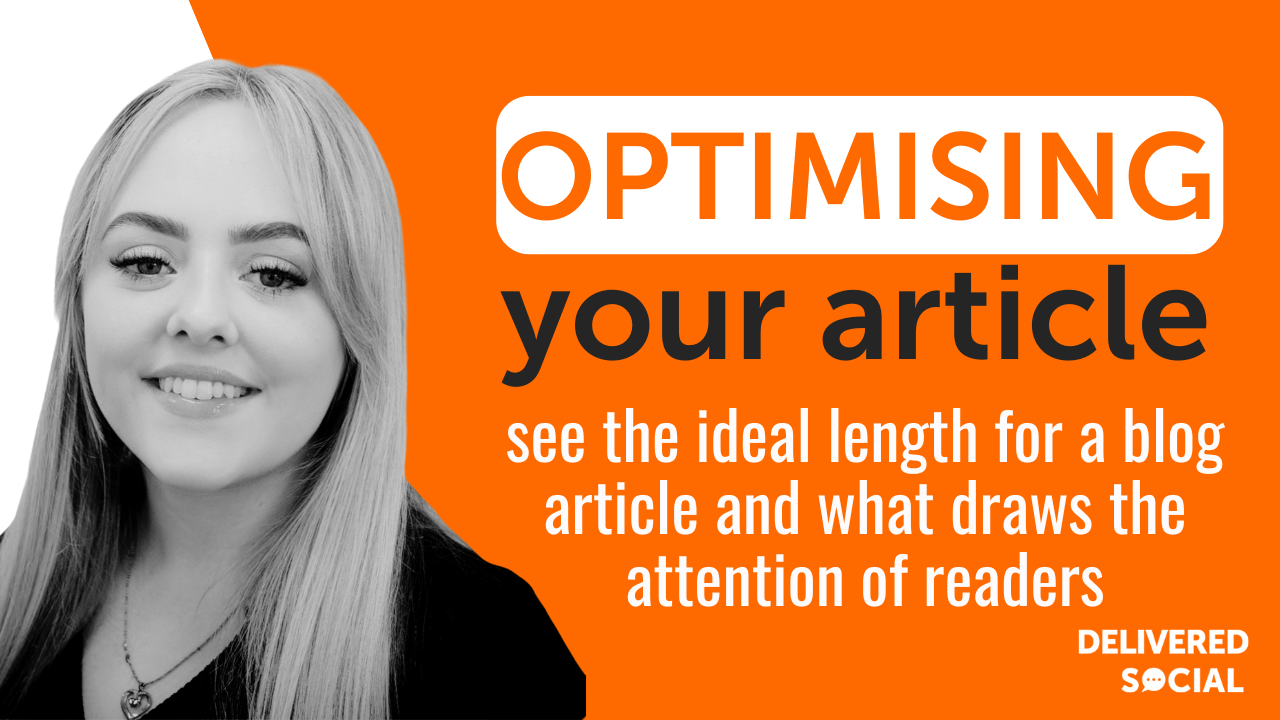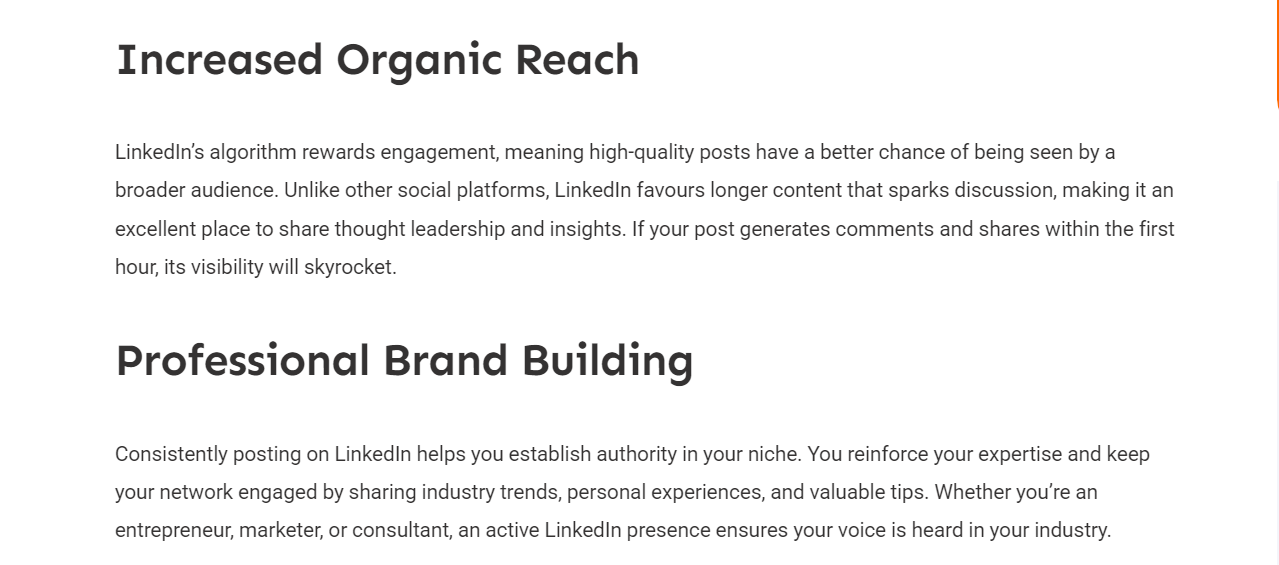
What is the ideal SEO article length for better rankings and reader engagement? The answer depends on the type of content, the target audience, and how Google evaluates quality. Many businesses and content creators struggle to find the right balance between writing articles that rank well and keeping readers engaged.
While there is no fixed word count that guarantees top rankings, research shows that longer articles (typically 1,500 to 2,500 words) perform better in search results. This is because they provide in-depth information, encourage longer session times, and attract more backlinks, all of which help improve SEO. However, SEO blog length should also consider readability, if an article is too long and unstructured, readers may leave the page quickly, negatively affecting engagement metrics.
The ideal SEO blog article length varies based on content type. For example, listicles and news articles may perform well at 800–1,200 words, while guides and research-based content may require 2,000 words or more. The key is to match content length to user intent, ensuring that readers get the answers they need without unnecessary filler.
This article will explore how SEO blog article length impacts rankings, what most readers are willing to engage with, and how to optimise content length for maximum SEO benefits. Whether you're writing blog posts, product pages, or in-depth guides, understanding the role of content length is essential for achieving higher rankings and keeping your audience engaged.
How SEO Blog Length Affects Search Rankings
Many businesses and content creators wonder if the length of an SEO article really impacts rankings. The answer is yes, but it's not just about writing longer content. Google prioritises high-quality, relevant, and well-structured articles that provide value to readers. Word count alone doesn't guarantee success, but SEO blog length plays an important role in search performance.
Longer content ranks better on Google: Studies show that articles between 1,500 and 2,500 words tend to perform better in search results. This is because longer content allows for in-depth explanations, keyword variation, and better engagement metrics. When an article covers a topic thoroughly, it is more likely to attract backlinks, social shares, and user engagement, which are key ranking factors.
Content length and dwell time: One of the reasons why Google favours longer articles is that they tend to keep visitors on the page for longer. When a reader spends more time on a webpage, Google sees this as a signal that the content is useful. A high dwell time reduces bounce rates, which improves rankings over time. However, if an article is too long and lacks structure, users may leave the page early, which can hurt performance.
Keyword optimisation in longer content: A well-optimised long-form article gives more opportunities to include relevant keywords naturally. Unlike short articles, which might only focus on one or two primary keywords, a longer article can incorporate long-tail keywords, related search terms, and semantic variations. This increases the chances of ranking for multiple search queries.
More opportunities for internal linking: Longer articles allow for better internal linking, which improves site navigation and helps distribute link equity across the website. Well-placed internal links keep visitors engaged and direct them to related content, increasing the likelihood of higher page views and better SEO performance.
When shorter content works better: Not every article needs to be 2,000 words long. SEO blog length should match the search intent of the reader. If users are looking for a quick answer, a concise 800–1,000-word article may be more effective. However, for in-depth guides, case studies, and research-based content, long-form articles are the better choice.

What Most Readers Are Willing to Read?
When considering SEO article length, it's important to balance what ranks well on Google with what readers are actually willing to read. While long-form content often performs better in search rankings, readers' attention spans are shorter than ever, meaning content must be engaging, well-structured, and easy to digest.
Understanding reader behaviour: Studies show that most online readers prefer content that is scannable, visually appealing, and delivers value quickly. While articles over 1,500 words perform well in search engines, many readers will only skim through key sections rather than reading every word. This means long-form content must be broken down into easy-to-read chunks to keep users engaged.
The importance of structure and readability: Even if an article is SEO-optimised, it won't perform well if readers find it difficult to follow. To improve readability, businesses should:
- Use short paragraphs to make content easier to skim.
- Include subheadings to guide readers through key sections.
- Use bullet points and lists to highlight important takeaways.
- Add images, charts, or infographics to make complex topics more digestible.
By improving readability, businesses can ensure that readers stay on the page longer, increasing engagement and reducing bounce rates.
Matching content length to user intent: The ideal SEO article length depends on what the user is looking for. Different types of content require different approaches:
- Quick answers and FAQs: 500–800 words, offering clear, concise explanations.
- Standard blog posts: 1,000–1,500 words, providing moderate detail.
- Guides and how-to articles: 2,000–2,500 words, covering a topic in-depth.
- Industry reports and case studies: 3,000+ words, offering comprehensive insights and data.
For businesses producing SEO blog article length that aligns with search intent, it's crucial to ensure the content is long enough to rank well but not so long that readers lose interest.
Engagement over word count: A well-structured 1,200-word blog that keeps readers engaged and answers their questions is more valuable than a 3,000-word article full of fluff. The best approach is to focus on delivering value, optimising for readability, and ensuring the content aligns with what users actually want to know.

How To Optimise SEO Blog Article Length For Better Rankings
Writing an article that ranks well on Google requires more than just choosing the right SEO article length. The way content is structured, formatted, and optimised plays a major role in keeping readers engaged and improving search engine rankings. Here's how to ensure your SEO blog article length works in your favour.
Use clear headings and subheadings: Readers often scan an article before deciding whether to read it in full. Breaking content into short sections with descriptive headings helps readers find the information they need quickly.
- Use H2 and H3 subheadings to structure the content logically.
- Make sure headings include primary and secondary keywords naturally.
- Avoid large blocks of text, use paragraphs that are 2–3 sentences long.
Incorporate internal and external links: Linking to relevant blog posts, landing pages, or external sources improves the article's credibility and keeps users on your site longer.
- Link to other high-quality content on your website.
- Use anchor text that naturally describes the linked content.
- Include links to authoritative external sources for additional trust signals.
Write content that matches search intent: Google ranks content higher when it directly answers user queries. If someone searches for SEO blog article length, they likely want guidance on ideal word counts and best practices.
- Provide direct answers early in the article.
- Use bullet points and lists to improve readability.
- Address common questions related to the main topic.
Optimise for readability and engagement: Even long-form articles should be easy to read. Keeping users engaged reduces bounce rates, which positively impacts SEO.
- Use short paragraphs and active language to maintain flow.
- Add images, infographics, or embedded videos to enhance user experience.
- Avoid unnecessary words, focus on delivering clear, valuable information.
Balance keyword placement: Stuffing too many keywords into an article hurts readability and SEO. Instead, keywords should be placed naturally throughout the content.
- Include the primary keyword in the first 100 words.
- Use secondary keywords in subheadings and throughout the article.
- Avoid overuse, Google penalises articles that appear unnaturally optimised.
An optimised SEO blog article length should be long enough to provide value but structured in a way that keeps readers engaged.
Struggling to improve your website's search rankings? Our in-depth guide on how to get your website higher on Google search covers the best SEO strategies, from optimising your content to choosing the right hosting package. Whether you're a small business or an established brand, these proven tips will help you increase visibility, boost traffic, and climb the search rankings.
Finding The Right SEO Article Length For Your Business
Choosing the right SEO blog article length is not about writing as much as possible—it's about matching content to user intent, keeping readers engaged, and ensuring Google sees your content as valuable. While longer articles (1,500 to 2,500 words) tend to rank better for competitive keywords, shorter content (500 to 1,200 words) works well for quick answers and product pages.
The key to SEO success is not just length but how well the content is structured, formatted, and optimised. Articles should be clear, informative, and easy to scan, with proper headings, internal links, and engaging visuals to keep users on the page longer.
If you're unsure how to get the right balance between word count and SEO effectiveness, we can help. At Delivered Social, we specialise in creating high-ranking content that drives traffic, increases conversions and engages readers.
Not sure where to start? Pop into our free Social Clinic, where we'll review your content strategy and provide expert recommendations—all at no cost to you.
Book your free session today and let's create content that ranks and converts.
Interested In Working Together?
Introducing Delivered Social. We're The Most-Rated Digital Agency In Surrey & Hampshire – We've Got To Be Doing Something Right.
Delivered Social is a digital marketing agency with one mission—to help businesses grow. We're famous in Guildford and Portsmouth for our social clinics. We believe in free advice. We build lasting relationships because our team prides itself on being helpful, which our clients appreciate.
If you are looking for a new website or an agency to manage your social media presence, we can help.
If you need something slightly different, here's a super handy list of all our services, or you can always email us.























